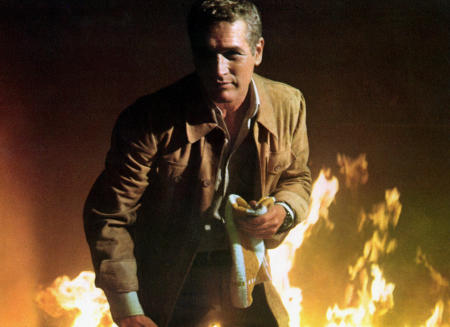Welcome to Retro Television Reviews, a feature where we review some of our favorite and least favorite shows of the past! On Sundays, I will be reviewing the made-for-television movies that used to be a primetime mainstay. Today’s film is 1988’s Broken Angel! It can be viewed on YouTube.
Chuck Coburn (William Shatner) has a nice house in the suburbs, a nice job, a nice car, and a nice Bruins jacket. He’s hoping that he can once against have a nice marriage with his wife (Susan Blakely), despite the fact that she cheated on him and she still thinks that he spends too much time at work.
Chuck is proud of his teenage daughter, Jaime (Erika Eleniak). Jaime seems like the perfect suburban and angelic teenager. But then Jaime goes to prom and her best friend, Jenny (Amy Lynne), is gunned down in front of her. Jaime runs from the scene and vanishes. As Chuck searches for his daughter, he is stunned discover that Jaime, Jenny, and their boyfriends were all a part of a gang! His perfect daughter was smoking weed, doing cocaine, selling crack, and taking part in rumbles with a rival Asian gang. Even worse, Jaime’s gang was called …. LFN!
LFN? That stands for Live For Now. The Live For Now Gang. Whenever we see the members of the gang preparing to get into a fight with another gang, they all chant, “LFN! LFN!” LFN is a gang of white suburban teenagers and they look just as dorky as they sound. I mean, I think it would be bad enough to discover that your child is in a gang but discovering they were in a dorky gang would probably make it even worse.
The majority of Broken Angel is made up of scenes of Chuck searching the mean streets of Los Angeles. He partners with a social worker (Roxann Dawson) who is herself a former gang member. Chuck discovers that his daughter’s street name was — *snicker* — Shadow. He also befriend a member of the LFN’s rival Asian gang and tries to encourage her to go straight. This leads to scene in which he is attacked by Al Leong. Somehow, middle-aged William Shatner manages to beat up Al Leong. That, in itself, is worth the cost of admission.
Broken Angel deals with a serious issue but it does so in such an overwrought and melodramatic fashion that most viewers will be moved not to tears but to laughter. In Broken Angel, William Shatner gave the type of overly dramatic and self-serious performance that he routinely pokes fun at today. If you’re one of those people who enjoys listening as Shatner emphasize random syllables and takes meaningly pauses, this movie will give you a lot to enjoy. In every scene, Shatner seems to be saying, “Notice me, Emmy voters! Notice me!” Of course, it wouldn’t be until Shatner learned how to laugh at himself that the Emmy voters would finally notice him.
The film ends on an abrupt note but with the promise of better days ahead. Just remember — keep an eye out for the LFN!















